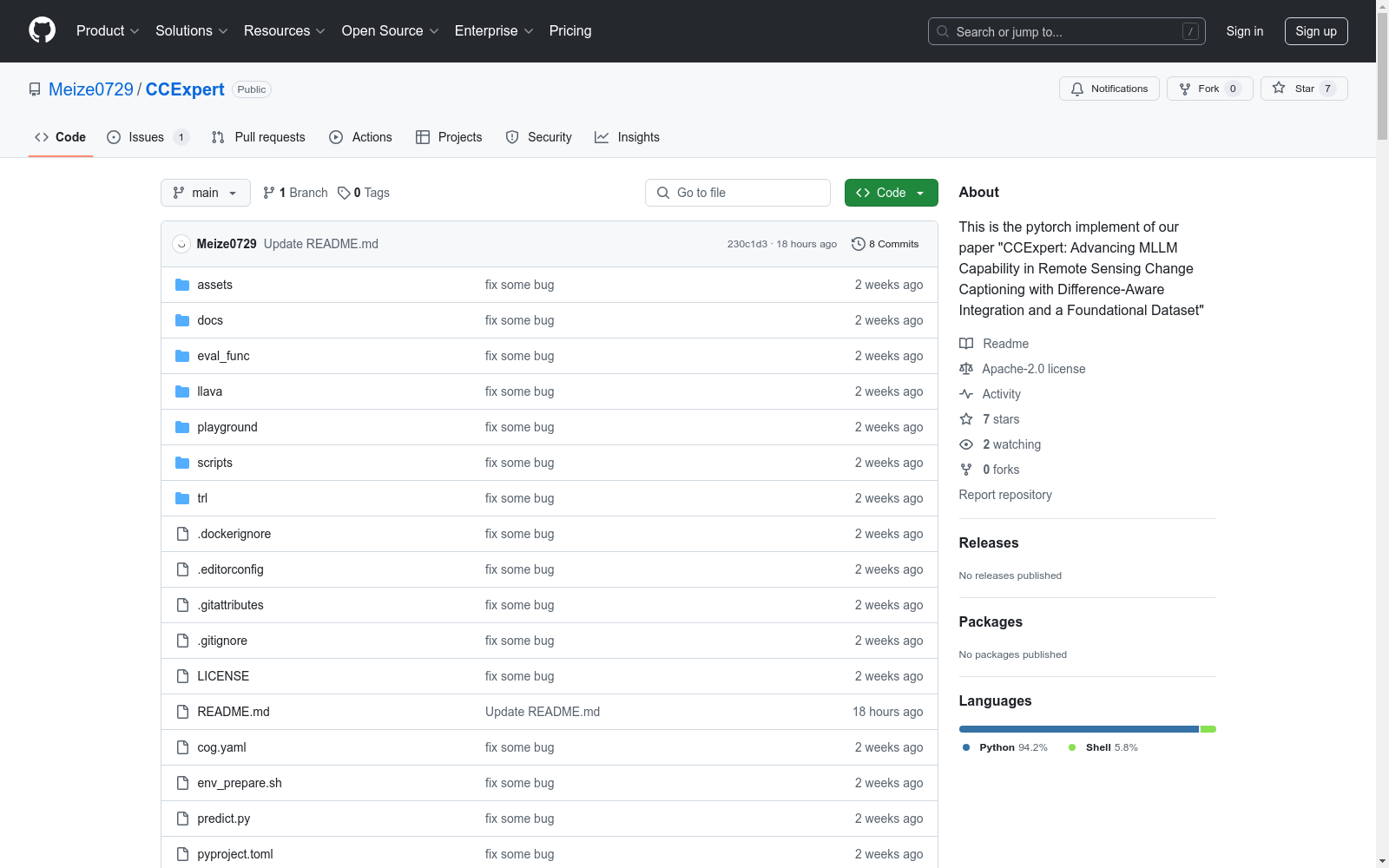CC-Foundation|遥感图像数据集|变化检测数据集
收藏CCExpert 数据集概述
数据集介绍
CCExpert 数据集是一个用于遥感变化描述的大型数据集,名为 "CC-Foundation Dataset"。该数据集旨在支持多模态语言学习模型(MLLM)在遥感变化描述任务中的能力提升。
数据集下载
数据集的部分内容已开源,可通过以下链接下载:
- Baidu NetDisk(访问码:ccmz)
数据处理步骤
- 下载并解压数据集:从上述链接下载数据集,并解压压缩包。
- 生成JSON文件:使用
add_sbsolute_path_to_all_json.py脚本生成包含所有JSON数据文件的子文件夹,并将图像路径从相对路径转换为绝对路径。 - 更新YAML文件:使用
add_CC_Foundation_local_absolute_path_to_yaml.py脚本将CC-Foundation的绝对路径添加到模板YAML文件中,以便查找相应的JSON标注文件。
数据集使用许可
使用该数据集时,请遵守各自数据集的许可协议。

Figshare
Figshare是一个在线数据共享平台,允许研究人员上传和共享各种类型的研究成果,包括数据集、论文、图像、视频等。它旨在促进科学研究的开放性和可重复性。
figshare.com 收录
HazyDet
HazyDet是由解放军工程大学等机构创建的一个大规模数据集,专门用于雾霾场景下的无人机视角物体检测。该数据集包含383,000个真实世界实例,收集自自然雾霾环境和正常场景中人工添加的雾霾效果,以模拟恶劣天气条件。数据集的创建过程结合了深度估计和大气散射模型,确保了数据的真实性和多样性。HazyDet主要应用于无人机在恶劣天气条件下的物体检测,旨在提高无人机在复杂环境中的感知能力。
arXiv 收录
Pima Indians Diabetes Database
该项目使用的数据集是Pima Indians Diabetes Database,来源于UCI机器学习库。该数据集包含多个医学预测变量和一个目标变量,即Outcome,用于指示患者是否患有糖尿病(1)或未患(0)。
github 收录
Wind Turbine Data
该数据集包含风力涡轮机的运行数据,包括风速、风向、发电量等参数。数据记录了多个风力涡轮机在不同时间点的运行状态,适用于风能研究和风力发电系统的优化分析。
www.kaggle.com 收录
WorldClim
WorldClim是一个全球气候数据集,提供了全球范围内的气候数据,包括温度、降水、生物气候变量等。数据集的分辨率从30秒到10分钟不等,适用于各种尺度的气候分析和建模。
www.worldclim.org 收录
